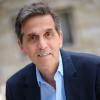Some welcome news, finally, this Monday for anyone craving even the merest scent of sanity in America's Tea Party political season. "Moderates," it seems, are coming out of hiding.
A report in The Los Angeles Times focuses on efforts lead by Michael Bloomberg, the independent mayor of New York, to bolster moderate candidates of both parties. Bloomberg has labelled the Tea Party insurgency a "boomlet" and a "fad," and believes these activists have hijacked the political discussion this campaign season.
An indication that Bloomberg may be right about the Tea Party is buried elsewhere in The Los Angeles Times, in an article about health care reform. The report centers on an Associated Press poll that finds -- despite all the Tea Party anger -- that "Americans who think the (Obama healthcare) law should have done more outnumber those who think government should stay out of healthcare by 2-to-1."
You read that right -- a vast majority of Americans think healthcare reform should have gone even further. Those who think the federal government should just butt out: only 20 percent of those questioned.
But that 20 percent figure is important to note. It is a figure -- a bit more or less -- that pops up again and again in polling on polarizing issues. A Sarah Palin presidential run, for example, is supported by about 25 percent of voters in most polls. According to the new book The Backlash: Right Wing Radicals, High-Def Hucksters, and Paranoid Politics in the Age of Obama, other polls showed that -- in the midst of the heated summer 2009 debate -- only 27 percent of voters opposed health care reform.
Look at Perot voters in the recession-centered 1992 presidential election: they were about 19 percent of the overall total. In the backlash year of 1994, when the GOP retook Congress, Republicans garnered - wait for it - 19 percent of the eligible vote. In a low turnout year for dispirited Democrats, that was enough to spark a radical shift.
There is, it seems, a hardcore 20-to-25 percent of the electorate who form something of an extreme anti-government right wing. That number ebbs a flows a bit with the economic times -- but through thick and thin, they are always there. The difference this year, as Bloomberg notes, is that this minority has come to dominate the discussion. Fueled by the hyper-partisanship of cable television and online bloggers, the focus has been on this faction like never before.
Bloomberg has both the money (he's made billions with his Bloomberg financial news service) and the moderate credentials to help shift the conversation over the next few weeks. Whether a fractured and polarizing media will give him the chance remains to be seen.



